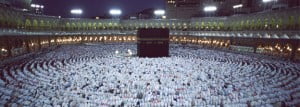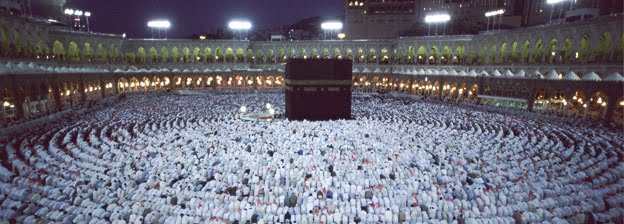If you are interested in the religion of Islam and would like to know more, then this exhibition in the British Museum is for sure worth a visit. This exhibition focuses on Hajj, the pilgrimage which should be done by every Muslim at least once during their lifetime.
Hajj: journey to the heart of Islam
26 January – 15 April 2012
British Museum

The official press release of the exhibition:
Hajj: journey to the heart of Islam will be the first major exhibition dedicated to the Hajj; the pilgrimage to Mecca (Makkah) in the Kingdom of Saudi Arabia which is central to the Muslim faith. The exhibition will examine the significance of the Hajj as one of the Five Pillars of Islam, exploring its importance for Muslims and looking at how this spiritual journey has evolved throughout history. It will bring together a wealth of objects from a number of different collections including important historic pieces as well as new contemporary art works which reveal the enduring impact of Hajj across the globe and across the centuries. The exhibition which has been organised in partnership with the King Abdulaziz Public Library Riyadh will examine three key strands: the pilgrim’s journey with an emphasis on the major routes used across time (from Africa, Asia, Europe and the Middle East); the Hajj today, its associated rituals and what the experience means to the pilgrim; and Mecca, the destination of Hajj, its origins and importance.
It is laid down in the Qur’an that it is a sacred duty for Muslims everywhere, if they are able, to make the journey to Mecca at least once in their lives. This pilgrimage takes place during the last month of the Islamic year, known as Dhu’l Hijja. At the heart of the sanctuary at Mecca lies the Ka’ba, the cube-shaped building that Muslims believe was built by Abraham and his son Ishmael. It was in Mecca that the Prophet Muhammad received the first revelations in the early 7th century. Therefore the city has long been viewed as a spiritual centre and the heart of Islam. The rituals involved with Hajj have remained unchanged since its beginning, and it continues to be a powerful religious undertaking which draws Muslims together from all over the world, irrespective of nationality or sect. .
A wide variety of objects will be lent to the exhibition. Loans include significant material from Saudi Arabia including a seetanah which covers the door of the Ka’ba as well as other historic and contemporary artefacts from key museums in the Kingdom. Other objects have come from major public and private collections in the UK and around the world, among them the British Library and the Khalili Family Trust. Together these objects will evoke and document the long and perilous journey associated with the pilgrimage, gifts offered to the sanctuary as acts of devotion and the souvenirs that are brought back from Hajj. They include archaeological material, manuscripts, textiles, historic photographs and contemporary art. The Hajj has a deep emotional and spiritual significance for Muslims, and continues to inspire a wide range of personal, literary and artistic responses, many of which will be explored throughout the exhibition.
This exhibition concludes the British Museum’s series of three exhibitions focused on spiritual journeys.
In partnership with King Abdulaziz Public Library, Riyadh, Saudi Arabia.
HSBC Amanah has supported the exhibition’s international reach outside the Kingdom of Saudi Arabia.

